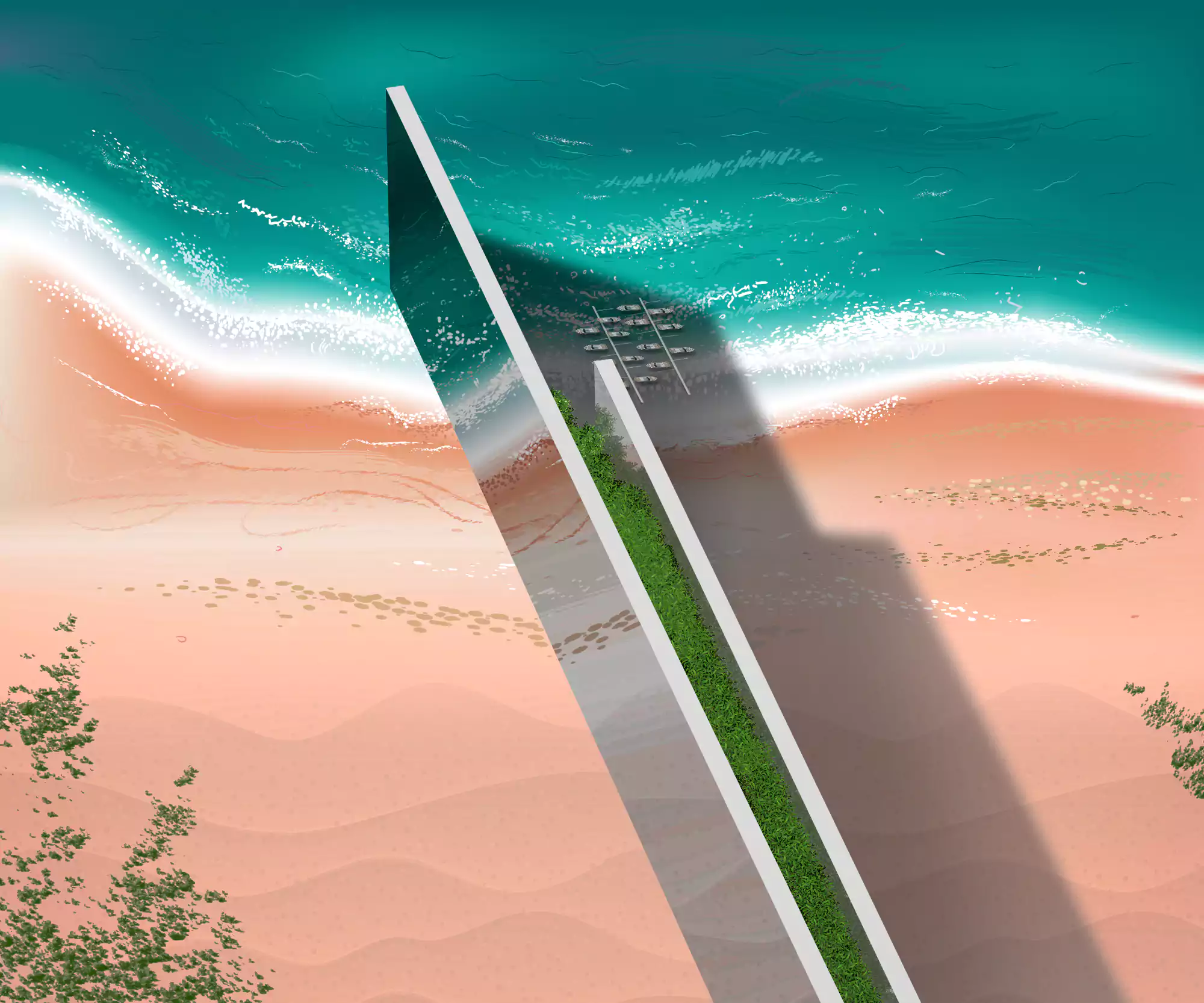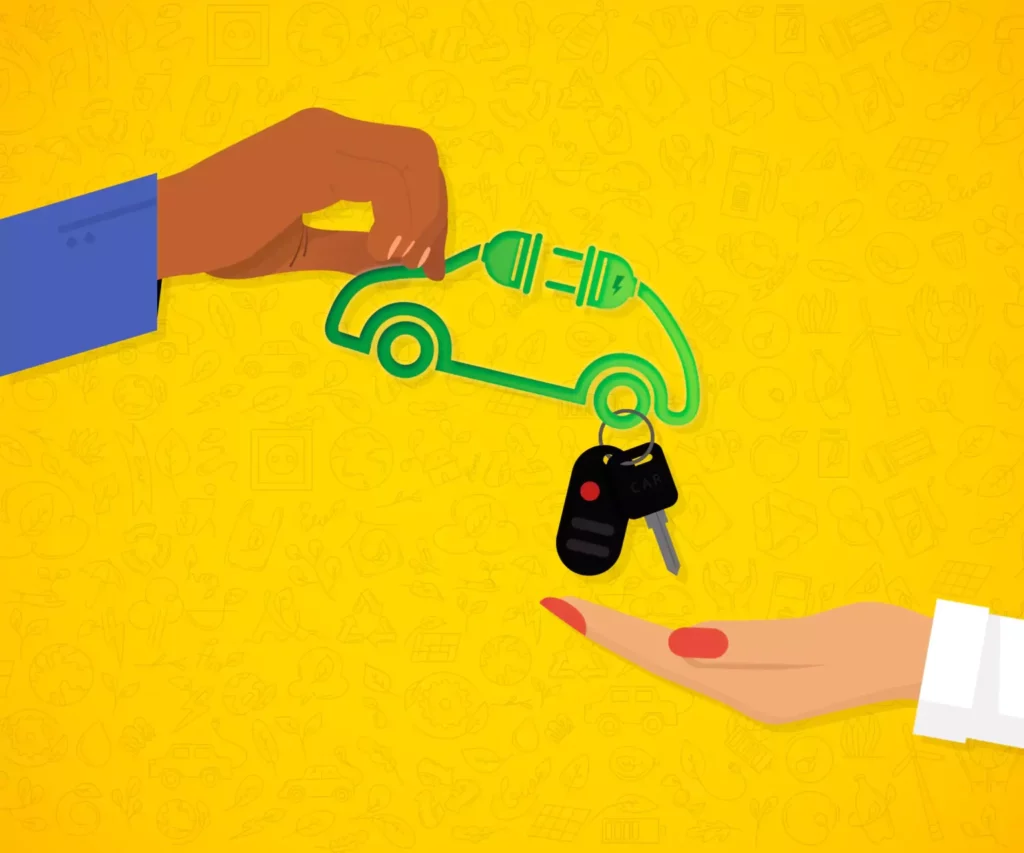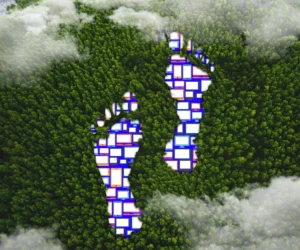
Late in July this year, Saudi Arabia redefined ambition in urbanism. The Internet was abuzz, and the excitement just refused to die down. The talk of the town, unsurprisingly, was Neom’s The Line! For those who are entirely clueless, we are not just throwing around made-up words. The shiniest, flashiest, and most opulent new thing that Saudi Arabia has in the works is The Line. Envisioned as a 170km stretch of gleaming glass and mirrors, it could be home to 9 million people. What is the big deal about this planned city? Well, this is not just a planned city. The Line will be a fully sealed city, the first of its kind. Its official site describes the city as smart, innovative, and sustainable. With invisible infrastructure, tactical urbanism will have scaled unimaginable heights thanks to The Line—that too, by 2030!
Are you feeling confused? We would imagine so. Let’s try to deconstruct The Line.
What is The Line?
To understand that, let’s begin with Neom. The name combines the Greek prefix ‘neo’ meaning ‘new’ with the letter ‘m’ at the end. The ‘m’ stands for ‘Mustaqbal’, an Arabic word that means ‘future’. Neom is a Saudi Arabian city-state that plans to set new environment-friendly living standards using innovative solutions. Within Neom, The Line will become a city of its own.
The Line, a dream project of Mohammad bin Salman, is integral to Saudi Arabia’s Vision 2030. With an estimated $500 billion construction cost, this vertical city will cover an area of over 26,500 sq. km—more extensive than some of Saudi Arabia’s neighbours. Located in the Tabuk province in north-western Saudi Arabia, The Line is advertised as a futuristic urban dream.
The pillars of some hyper-nuanced innovations support this dream. With cloud seeding technology, rainfall will be way more than possible in a desert, making The Line far more liveable and appealing. But, unlike any other city, this one will boast glow-in-the-dark beaches, artificial moons, and levitating trains covering a vertical expanse of roughly 161 km. Among other things, Neom’s The Line is Saudi Arabia’s answer to climate change! Carbon-free and lush with numerous trees, Neom is a desert vying for the prize of being the greenest place on earth.
What’s more, it will also house Oxagon—which will be the largest floating structure in the world. This structure will house the coming together of innovation and economic growth. Not just this, even though Saudi Arabia is planning it, it will be a state of the current Government of Saudi Arabia, with its own labour laws and tax system.
While it appears to be the blueprint for tomorrow where humanity can progress without harming the planet, a more critical inquiry may yield conflicting results.
Neom and sustainability
With vertical farms and greenhouses, The Line aims to achieve self-sufficiency in food production. The masterminds behind The Line plan to create an entire food sector using the recirculatory aquaculture system (RAS). Innovations are in the pipeline for responsibly producing food in desert environments. However, experts in this sector have admitted that such a technologically induced ecosystem presents challenges. Moreover, it remains to be seen if The Line can sustainably accomplish this in a country that imports nearly 80% of its food. According to an energy expert at the University of Oxford, Dr Manal Shehabi, there are serious doubts about whether or not food can be locally produced. Moreover, desalination, a famously carbon-heavy process that The Line will primarily use to fulfil its water requirements, is also a red flag.
Fall in line with The Line. Or else.
On the humanitarian front, too, The Line has met with controversy. While most people see it as a rich man’s toy, this city has a communication strategy aimed at welcoming everyone, regardless of their wealth. Even so, The Line cannot escape the displacement, plunder, and even murder that lies in its wake.
The site is home to the Huwaitat tribe that has resided there for generations, tracing their lineage as far back as before the founding of Saudi Arabia. Unfortunately, the construction of this fancy, glitzy city forcefully ousted several thousands of members of this tribe from their homes. Alia Hayel Aboutiyah al-Huwaiti, an activist invested in the cause of justice for her tribe, said, “Neom is being built on our blood and bones”. As it turns out, she was not just speaking figuratively. Authorities shot dead Abdulrahim al-Huwaiti, a local activist who refused to comply with an eviction. Reports claimed it was not for his resistance but because he first opened fire on the officers.
Nevertheless, Alia’s statement about Neom claiming lives remains true. According to her, displacement of local tribes and populations is a certainty in pursuing a paradise for few. Moreover, quite paradoxically, creating space for a cutting-edge, green, and sustainable city in a desert involved the destruction of many buildings of cultural and historical importance.
Owing to the physical and cultural eviction of the local population, The Line is fast turning from a planet saver to a vanity project. Its features and amenities appear narrowly aimed at international investments, elites, and the affluent domestic classes. Perhaps, it is too good to be true after all. Perhaps, not all that glitters is gold!


